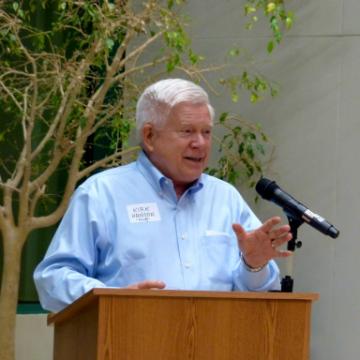
Has Technology Killed Academic Integrity?
Kirk Hanson
About seven years ago, when the Markkula Center for Applied Ethics first started our Big Q project to engage college students in conversation about the ethical issues in their everyday lives, one of the “big questions” students grappled with was: “When do I friend on Facebook?” Facebook was young enough that the etiquette of friend requests posed new ethical dilemmas.
In the years since, students have had to consider the ethics of Twitter-shaming, handle the outlandish and dangerous dares promoted by the social platform Neknominate, and contend with bullying on YikYak.
the ethical issues confronting students in the 21st century, particularly those presented by new technologies, change very quickly
All this is to say that the ethical issues confronting students in the 21st century, particularly those presented by new technologies, change very quickly. In addition to the new dilemmas students are confronting, we’re seeing old dilemmas resurface in new ways, specifically around academic integrity.
When I was a student with a paper to write, I would go to the card catalogue, find the book, write down a quote from it, and finally incorporate that into my paper. For today’s student, the process is much easier; they download the quote, and sometimes the line gets blurred between downloading a quote and downloading whole sections of existing work.
The temptation to blur the line is much greater because it’s so much easier. When it’s 4 a.m., a student hasn’t started the paper that’s due at 8, and he or she doesn’t want to disappoint parents, the urge to download something from the Internet can be overwhelming.
At least that student probably understands that such downloading is wrong. But other times the blurry lines create moral confusion. For example, the sources today’s students use are not just books, but blogs and informal comments on social media. Which of these sources—some of which are communal productions, such as Wikipedia—are someone else’s intellectual property? Which do you have to cite?
Notions of intellectual property ownership are further complicated by the tendency in today’s colleges and universities to encourage collaboration.
Notions of intellectual property ownership are further complicated by the tendency in today’s colleges and universities to encourage collaboration. In business schools, where I’ve taught, we’ve told people that teamwork is key to success in the business world; it’s a core skill and one that we celebrate. A lot of this collaboration happens online, using the same tools students use for social interactions, where citations and attributions are not the typical MO. In this environment, it can become hard to navigate between social and educational media use, hard to distinguish between collaboration and appropriating someone else’s work.
Partly because of this kind of confusion, many students don’t understand the gravity of taking information from the Internet without attribution. We know from longitudinal surveys conducted by Donald McCabe, co-founder of the Center for Academic Integrity, that fewer and fewer students are ethically troubled by unattributed downloading. In 2010, only 29 percent of students thought copying from the Internet without footnoting was a serious form of cheating, down five percent from 2006.
But while technology changes, ethical principles don’t. Passing someone else’s words off as your own is still wrong, whether you copied them from an index card or from a website. It’s our role as educators to transmit the traditions of ethical thinking to each generation of students, whatever new challenges they’re navigating.

